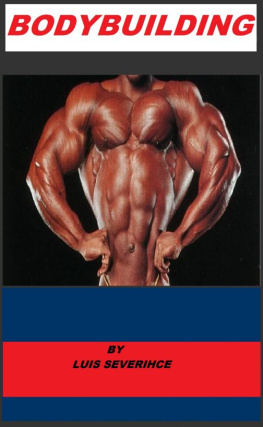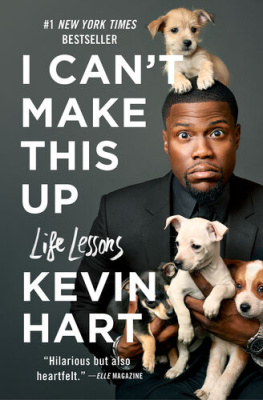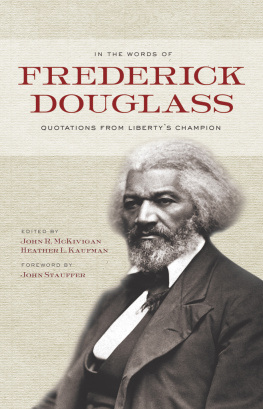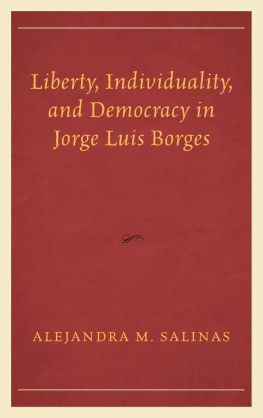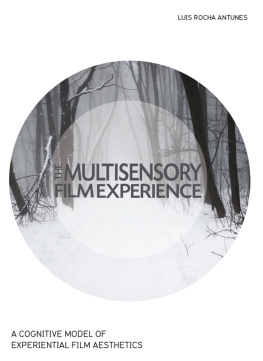Aldama Frederick Luis - Aesthetics of Discomfort
Here you can read online Aldama Frederick Luis - Aesthetics of Discomfort full text of the book (entire story) in english for free. Download pdf and epub, get meaning, cover and reviews about this ebook. publisher: University of Michigan Press, genre: Romance novel. Description of the work, (preface) as well as reviews are available. Best literature library LitArk.com created for fans of good reading and offers a wide selection of genres:
Romance novel
Science fiction
Adventure
Detective
Science
History
Home and family
Prose
Art
Politics
Computer
Non-fiction
Religion
Business
Children
Humor
Choose a favorite category and find really read worthwhile books. Enjoy immersion in the world of imagination, feel the emotions of the characters or learn something new for yourself, make an fascinating discovery.

- Book:Aesthetics of Discomfort
- Author:
- Publisher:University of Michigan Press
- Genre:
- Rating:3 / 5
- Favourites:Add to favourites
- Your mark:
- 60
- 1
- 2
- 3
- 4
- 5
Aesthetics of Discomfort: summary, description and annotation
We offer to read an annotation, description, summary or preface (depends on what the author of the book "Aesthetics of Discomfort" wrote himself). If you haven't found the necessary information about the book — write in the comments, we will try to find it.
Aesthetics of Discomfort — read online for free the complete book (whole text) full work
Below is the text of the book, divided by pages. System saving the place of the last page read, allows you to conveniently read the book "Aesthetics of Discomfort" online for free, without having to search again every time where you left off. Put a bookmark, and you can go to the page where you finished reading at any time.
Font size:
Interval:
Bookmark:

Frederick Luis Aldama and Herbert Lindenberger
University of Michigan
Ann Arbor
Copyright 2016 by the Frederick Luis Aldama and Herbert Lindenberger
All rights reserved
This book may not be reproduced, in whole or in part, including illustrations, in any form (beyond that copying permitted by Sections 107 and 108 of the U.S. Copyright Law and except by reviewers for the public press), without written permission from the publisher.
Published in the United States of America by the
University of Michigan Press
Manufactured in the United States of America
A CIP catalog record for this book is available from the British Library.
ISBN 978-0-472-07300-9 (hardcover : alk. paper)
ISBN 978-0-472-05300-1 (paperback : alk. paper)
ISBN 978-0-472-12163-2 (ebook)
To our children
Corina Villena-Aldama
Michael Lindenberger
Elizabeth Lindenberger,
whose early aesthetic discomforts have helped feed these conversations
Ugliness exists only because of Beauty, which is its positive premise. If there were no Beauty, there would be no ugliness, because the latter exists only as the negation of the former. Beauty is the original divine idea and its negation, ugliness, as it is a negation, has only a secondary existence. Not in the sense that the beautiful, because it is beautiful, may be ugly at the same time, but in the sense that the very properties that constitute the necessity of Beauty are converted into its opposite.
Karl Rosenkranz, Aesthetik des Hlichen [The Aesthetics of Ugliness] (1853)
[Ugliness] has not completely vitalized and controlled the material which it has taken within its action; and... this inability to execute its plan, this stammering and falling short in the utterance of its message, gives pain.
John Bascom, Aesthetics; or The Science of Beauty (1886)
The value of an aesthetic experience is determined today not by the way a crisis is resolved but rather the way in which, after propelling us into a sequence of known crises determined by improbability, it forces us to make a choice. Confronted by disorder, we are then free to establish temporary, hypothetical systems of probability that are complementary to those systems that we could also, eventually or simultaneously, assume.
Umberto Eco, The Open Work (1989)
Disgust offers an entirely different set of aesthetic and critical possibilities from the one offered by desire.... In its intense and unambivalent negativity, disgust thus seems to represent an outer limit or threshold of what I have called ugly feelings, preparing us for more instrumental or politically efficacious emotions.
Sianne Ngai, Ugly Feelings (2005)
Downers are good for the soul.
Overheard on the San Francisco Muni Railway (2015)
These conversations began on our frequent walks over the years along Crissy Field, San Franciscos first landing fieldnotable at once for its close-up view of the Golden Gate and the fact that many brave pilots, long before the age of smart planes, crashed there to their fiery deaths. It was during these walks that we first discovered our mutual fascination by that segment of art, music, film, and literature that purposefully sought out a reaction of displeasure. Cage, Rabelais, Schoenberg, Bosch, Sade, Mapplethorpe were among that band whom we invited along with usand whom we discuss at frequent points in these pages. In the spirit of these initial conversations, we have written a book in a conversational format that covers a range of none-too-pleasant notions based on conspicuously discomforting examples. Because most consumers of the arts seek out experiences based on what they take to be the pleasing and the beautiful, the ideas we discuss here have all too often been sidelined from serious aesthetic discussion. We hope that our discussions will provoke others to develop these ideas in greater depth.
Our book sets out to consider on its own terms the presence of art (literature, music, film, visual arts, and architecture, for instance) that discomforts. This is not art that has discomforting moments built into its design so as to ultimately bring us to some sort of feeling of catharsis or satisfaction. This is art that in its aims and goals seeks as its raison dtre from alpha to omega to disturb, discomfort, disquiet, and repulse. Of course, we are not the first to take on the subject of disquieting art. Our conversation will be joined by the formulations of others such as Aristotle, Hegel, Hume, Descartes, and Kant along with more contemporary theorists. We hope to enlarge the discussion la conversacin de sobremesa (a tradition in Latino culture of discussing subjects in great detail and at great length after dinner) about how the disquieting in and of itself is an essential ingredient in formulating theories of aestheticsjust as the beautiful is. It is there and exists in itself and by itself.
In Aesthetics of Discomfort we explore everything centrally relevant to the use of aesthetic devices in the creation of new shapes aiming to disquiet in as many of the arts as possiblewithout, of course being exhaustive. We consider the map not to be the territory. We know well that our book cant cover all the ground in the various arts. Yet we aim to be thorough in our exploration of examples, illustrating our approach to aesthetics and to the categories we use in aesthetics. We will consider first and foremost how the shaping devices respective of each art medium create disquieting objects. And this novelty can itself be disquieting. Hence, Baudelaire and Rimbaud and others in the nineteenth century and early twentieth century considered it an imperative to make it new; knowing well that the shock value of the new didnt last long, they were in permanent search of new forms, new shape-giving instruments. Hence, the explosion in literature of tools that became a trademark of the modernists.
In order to allow for a free-flowing yet far-reaching exploration of our topic, we envisioned a dialogue where a great many related topics might be broached in an economy of space. Though we are both scholars accustomed to publishing in a variety of different formats, choosing to give this topic the shape of a conversation allowed us to maintain our separate voicesand with these our differing experiences and knowledges, and also our sometimes differing judgments. Our aim: to create a judicious contrapuntal interplay of two independent voices that move in and around one another to create the total composition that brings to light a whole bandwidth of themes built in and around the discomforting in art. As the book unfolds, we use the term discomforting alongside and in overlapping ways with the subtype, disquietingall with the clear sense that the former is a capacious term used to identify a wide swath of phenomena and experience and the latter the experience of violation of ones own quiet and protected, say, space.
An ongoing concern of this book is how it is that consumers of art have been able to overcome earlier resistances to particular artists and works, whether to Gngoras knotty poem Polifemo, or to Beethovens late quartets, or to Picassos Les Demoiselles dAvignon. And we shall frequently invoke cognitive-development psychology as well as recent experiments in neuroscience that begin to explain phenomena of this sort.
Although our mode of presentation remains the conversations that took place between us, readers will also, we hope, discern an ongoing argumentnamely, that art that discomforts us, even though it did not become predominant until the modernist revolution over a century ago, has always been with us, for example, as well show later, in the disconcerting (literally!) dissonances in Claudio Monteverdis music, dissonances, moreover, that did not merely displease the more traditional-minded music theorists of his time but, until the advent of modernism, were repeatedly criticized by music historians adventurous enough to examine old and long-forgotten scores.
Next pageFont size:
Interval:
Bookmark:
Similar books «Aesthetics of Discomfort»
Look at similar books to Aesthetics of Discomfort. We have selected literature similar in name and meaning in the hope of providing readers with more options to find new, interesting, not yet read works.
Discussion, reviews of the book Aesthetics of Discomfort and just readers' own opinions. Leave your comments, write what you think about the work, its meaning or the main characters. Specify what exactly you liked and what you didn't like, and why you think so.


